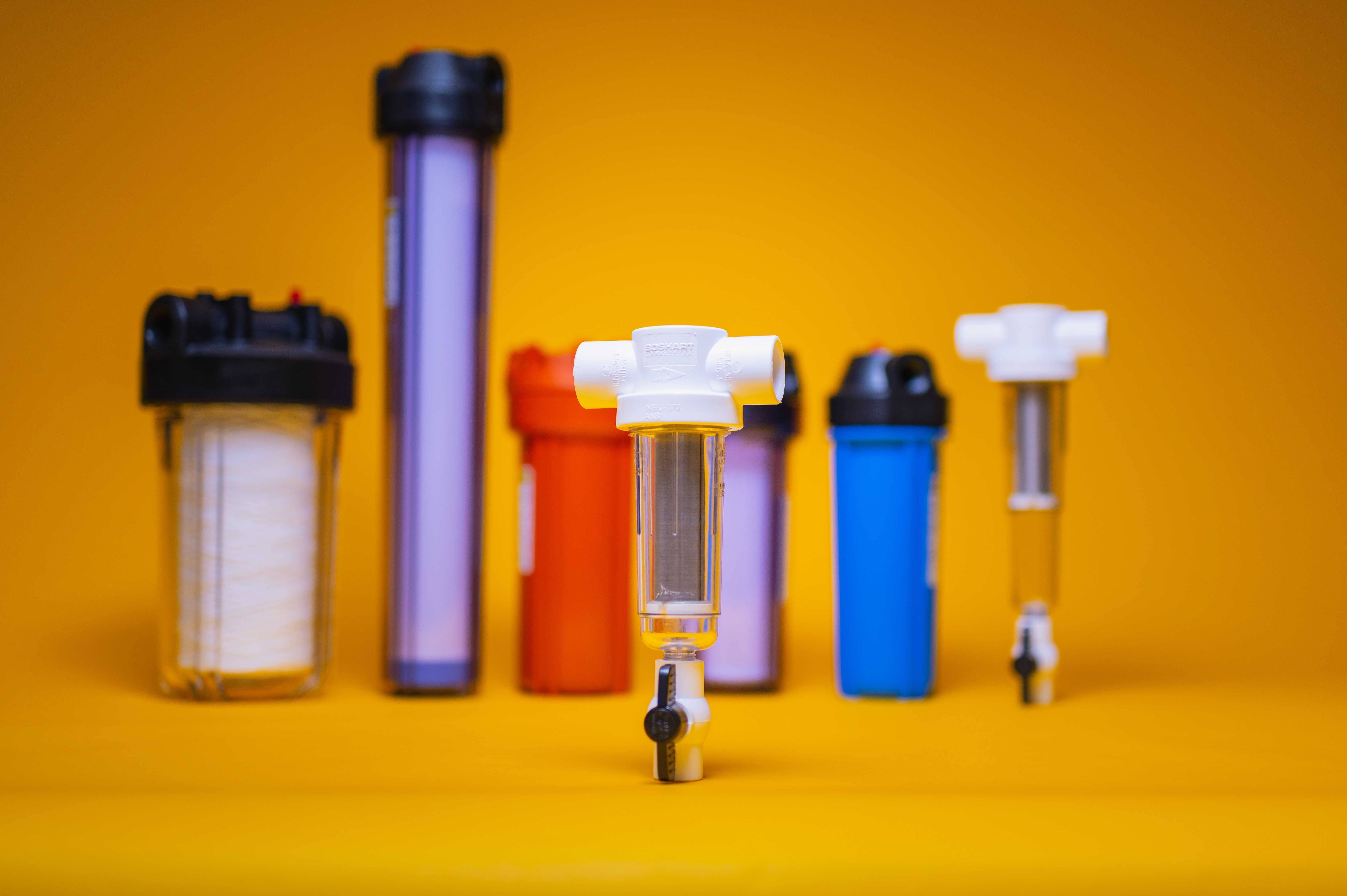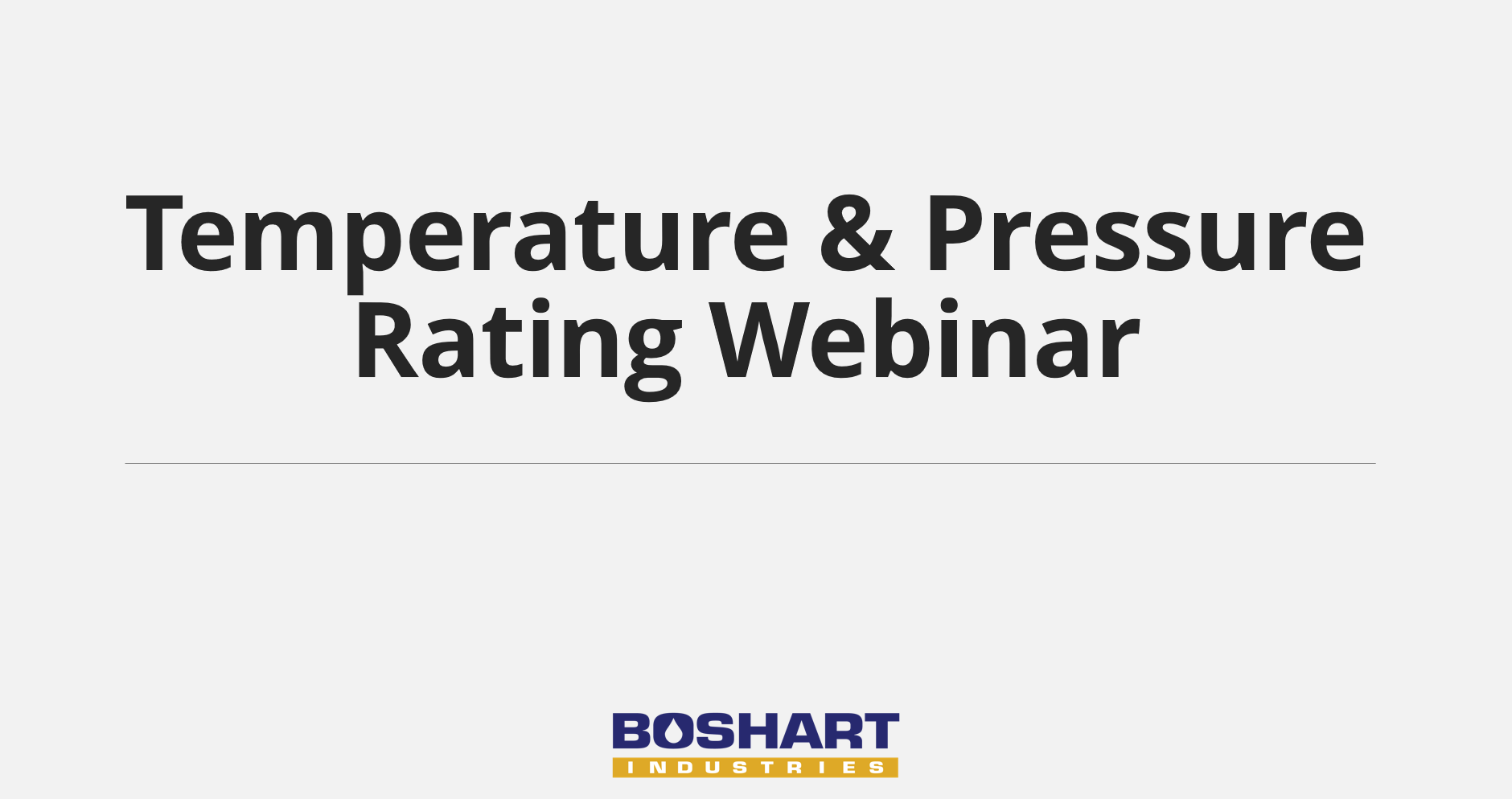It’s not always easy to tell when your filter cartridge needs replacing—especially in housings where you can’t easily see the condition of the cartridge. While a good general rule is to swap it out during daylight saving time (each spring and fall), some systems may need more frequent changes.
That’s where the pressure drop—or "pressure differential"—method comes in. In this blog, we’ll walk you through how this technique works and how it can help you accurately determine when it's time for a new filter cartridge.
This BoshartU blog is based off of our Knowledge Base article, Using Pressure Drop to Indicate When it's Time to Change Out your Filter Cartridge. Read it here.
Pressure Differential Method
You can use the "Pressure Drop" or Pressure Differential" method to indicate when its time to change your filter cartridge. This is a very simple and common way to monitor your filtration system.
It is important to note that it is still crucial to maintain a 6 month filter change out schedule. Time always overrules the pressure drop method especially in drinking water applications. If it has been 6 months since you changed your cartridge last, your filter cartridge must be changed immediately to prevent bacteria from growing. Regular filter cartridge replacements ensure clean and safe drinking water for your home.
If it has been 6 months since you changed your cartridge last, your filter cartridge must be changed immediately to prevent bacteria from growing. Regular filter cartridge replacements ensure clean and safe drinking water for your home.
If you are starting to notice a taste, smell or a change in the water pressure, you may need to change your filter as early as 2-5 months. There are many variables depending on usage, water quality and the type of filter you are using. For example, if you are using an activated carbon taste and odour cartridge, you will need to change it out when you start noticing an odd smell or taste.
Another dependant is on the system pressure requirements. You may choose to change the cartridge at a lower 4 or 5 PSI pressure differential to maintain desirable system pressure and efficiency. However, when the pressure drops 5 to 7 PSI, the filter cartridge should be changed out.
Pressure Differential Diagram
The below diagram shows a typical installation with pressure gauges installed on both the inlet and outlet sides of the filter housing, explaining the pressure differential method.

Instructions:
Step 1: Start by noting the pressure readings on both the inlet and outlet pressure gauges after a clean filter cartridge has been installed. You will then notice a pressure drop of 1-3 PSI when the water is being used. Don't worry, this is normal and will vary depending on the type of filter cartridge you installed.
Step 2: Record the two pressures somewhere near the filter so you can reference it in the future. This will let you see if there are significant changes in the systems pressure.
Step 3: Final step is to periodically monitor the pressure drop. When the pressure drop increases, usually by an additional 5-7 PSI, that indicates that the filter cartridge is clogged with particulate and needs to be replaced.
In Conclusion:
Not only should you follow the 6 month replacement schedule, but it is also important to be aware of different situations that may require you to replace your filter cartridge sooner. You can also follow the simple pressure differential method to confirm 100% if you are unsure if its time to replace the cartridge or not.
Have questions about Boshart products?

Head over to Boshart's Knowledge Base: technical product information, guidelines, and more.





SHARE